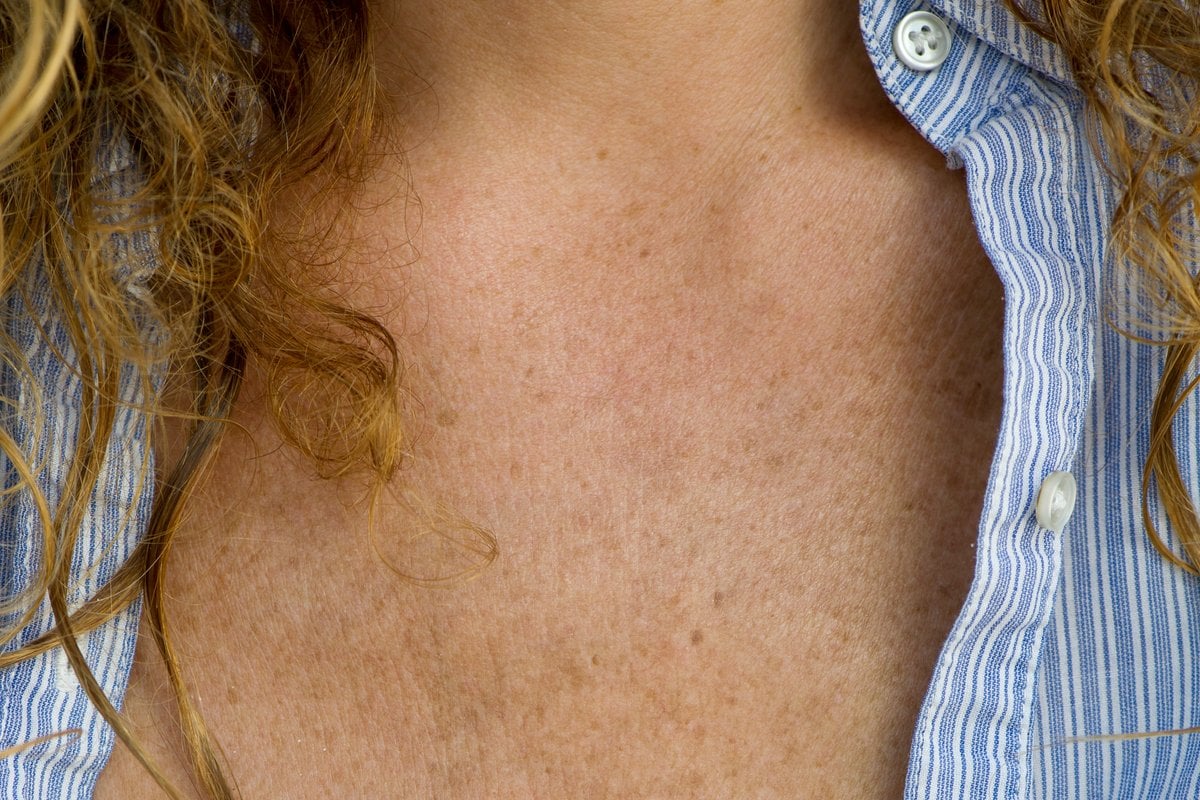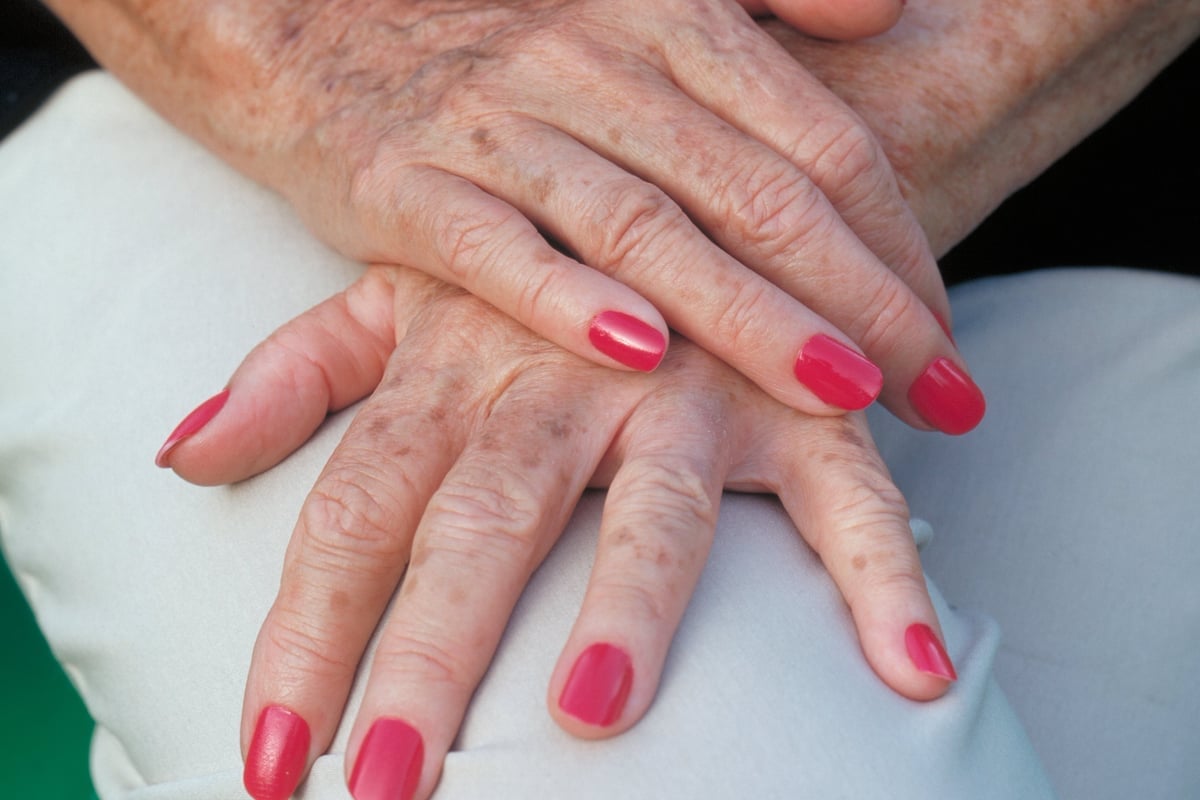
You know those brown spots that show up on your face, hands and chest that, like, aren't freckles? You know the ones? It's called hyperpigmentation - also known as liver spots or age spots - and it's SO common among Australian women that it's almost weird if you don't have them.
"Liver spots are also known as age spots, solar lentigines and various other names. They are a large 'blob' of pigmentation that occurs on the skin, usually in sun-exposed areas of the skin," explained Dr Giulia D'Anna from Dermal Distinction.
"They are typically found on the top of the head (particularly in follicularly-challenged men), the back of hands, side of face and decolletage." Cute!
Watch: Need to up your sun care game? Of course you do. We all do. Here's how to protect your skin from the sun. Post continues below.
So they're not freckles? Or they are?
"They are much larger than freckles and look like multiple freckles combined together. They are not in themselves dangerous, but sun exposed skin is always at higher risk of unwanted damage," explains Dr D'Anna.
Okay not freckles, got it.
Sooo... why do I have them?
Y'see, friends - these spots are REAL easy to get. And we'll give you one guess as to what causes them. Go on, just guess!

Top Comments